Did you know over 90% of dogs feel less anxious and behave better with a predictable daily routine ? If you’re a dog owner, you already know: a calm, content furry family member makes every day brighter. But what’s a good daily routine for my dog? In this guide, you’ll learn not just the essentials, but expert tips for tailoring a routine that keeps your pup’s tail wagging from sunrise to bedtime.
Dogs thrive when their days have structure—whether you’re a new pet owner, have an older dog, or are looking to fine-tune your current schedule, this guide has what you need. From feeding schedules and dog walks to mental stimulation and quality time, get ready to create habits that help your best friend feel secure, happy, and full of zest!
Why a Daily Routine Is Essential for Your Dog’s Well-being
Creating a daily routine for your dog isn’t just about convenience—it’s a game-changer for their physical and emotional health. When a dog owner sets predictable times for meals, walks, play, and rest, your furry friend knows what to expect and can enjoy a sense of security . This predictability helps reduce problem behaviors like excessive barking, destructive chewing, and even separation anxiety.
Both puppies and adult dogs depend on routine for proper development and good sleep. For example, a clear feeding schedule and regular dog walk can prevent accidents in the house and support digestive health. A structure also develops trust with your pet, helping them bond with every family member and adapt easily to changes, such as when you come home from work or have visitors.
The Science: How Routines Impact Both Puppies and Adult Dogs
Studies show dogs thrive with daily schedules that mirror their natural instincts for eating, playing, and resting. Puppies, especially, need a consistent routine for successful house training, socialization, and brain development, while adult dogs rely on routine for physical activity, managing energy, and overall wellness. A regular schedule triggers internal cues that tell your pet when to expect food, potty breaks, and play—making them calmer, more attentive, and easier to train.
If you’ve ever seen your dog waiting patiently by the door for their walk or dinner, that’s their internal clock in action. Veterinarians highlight that routine for your dog reduces stress and sets the stage for desirable behaviors, whether you have a new puppy or an older dog. Predictability is particularly important for rescue dogs or breeds prone to anxiety, who find comfort in knowing what comes next.
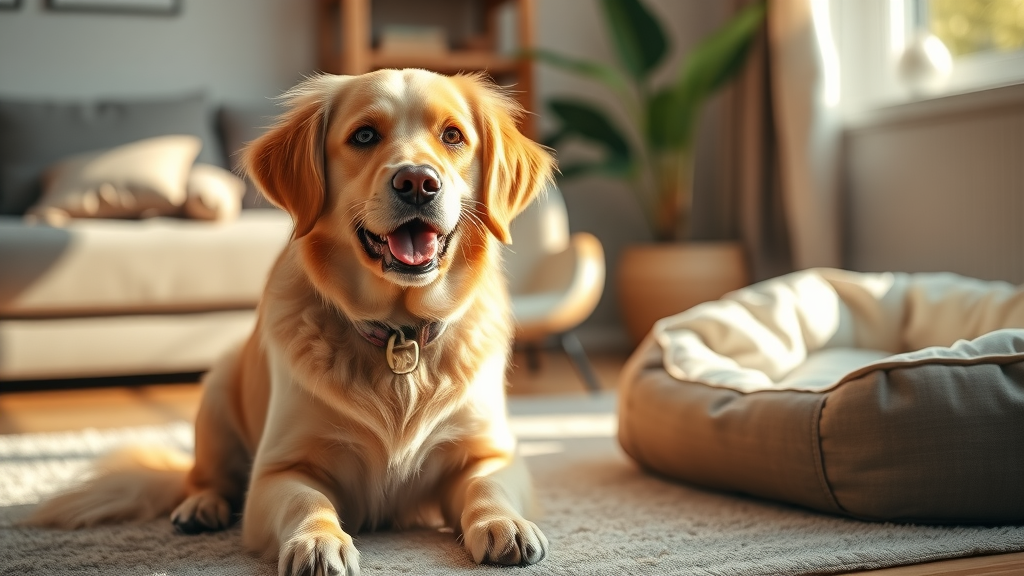
“Dogs thrive on structure and predictability. A set daily routine helps reduce stress and behavioral issues.” – Dr. Marcia Evans, Veterinary Behavioral Specialist
What You'll Gain: Mastering the Ideal Daily Routine for Your Dog
- Understand the importance of a daily routine for your dog’s health
- Learn sample daily schedules suited for adult dogs and puppies
- Discover expert tips for ensuring effective feeding schedules, potty breaks, and mental stimulation
- Find out how quality time impacts your dog's routine and happiness
Core Elements of a Successful Daily Routine for Your Dog
Every great daily routine revolves around a few core pillars: a reliable morning routine, a practical feeding schedule, frequent potty breaks, daily exercise, and plenty of quality time. Whether you’re managing a playful puppy’s boundless energy or an adult dog’s steady habits, these elements deliver comfort and stability for your four-legged companion. Don’t forget mental stimulation and environmental enrichment to keep their mind sharp and their spirit happy!
The best part? You can customize your dog’s routine based on age, breed, and household lifestyle. The following sections break down each piece of the puzzle, helping you build a schedule for your dog that encourages health, happiness, and longevity.
Morning Routine: Setting the Tone for Your Dog’s Day
A calm, consistent morning routine starts your dog’s day on the right paw. Most dogs begin each day ready to stretch, explore, and connect with their pet owner. Begin with a gentle, friendly greeting to let them know it’s time to transition from sleep to activity. Next, take your furry friend outside for their first potty break , which helps prevent accidents and signals that daytime fun is about to begin. This early outing jumpstarts digestion and gives your dog a positive outlet for pent-up energy.
After the potty break, a quick session of playful engagement or a training session gets their mind and body moving. This could be as simple as a short walk or a game of fetch, but it’s essential for stress relief and setting the mood for the hours ahead. Don’t forget to refresh their water bowl so they can hydrate! Finally, serve breakfast at the same time each day to establish a predictable schedule that soothes both puppies and adult dogs.
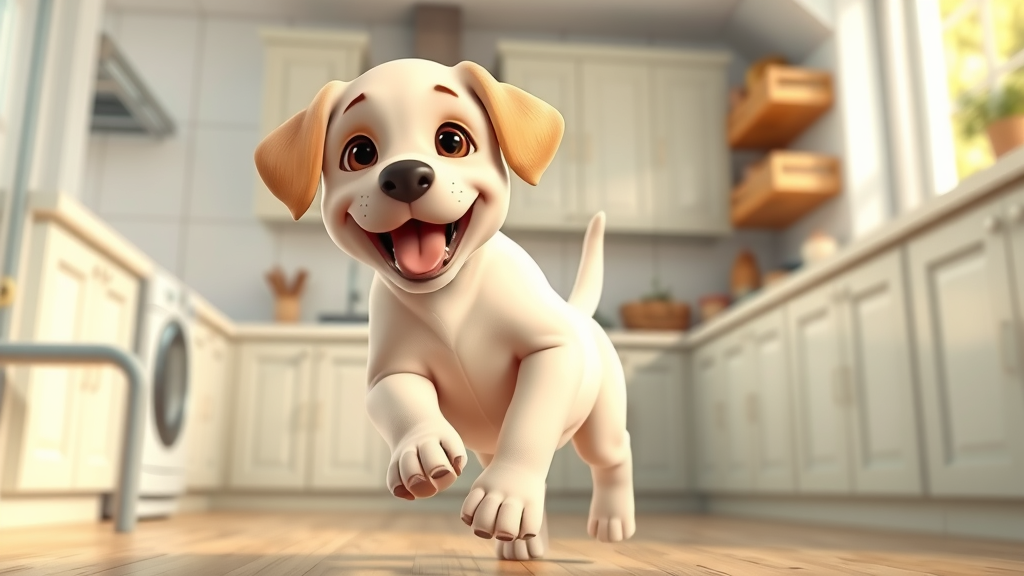
Sample Daily Schedule for Adult Dogs and Puppies
Designing a daily schedule depends on your dog’s life stage, with adjustments for age, breed, and temperament. Puppies require more frequent meals, potty breaks, and training sessions, while adult dogs benefit from longer walks, fewer feedings, and increased focus on mental stimulation. Below, you’ll see how routines differ for puppies and mature pets. Following a consistent plan is key for any dog owner looking to avoid behavioral issues and set their companion up for success.
Use the following table for inspiration as you build your routine for your dog—it’s just a starting point, so don’t be afraid to tailor details based on your environment and your furry friend’s unique preferences.
| Activity | Puppies | Adult Dogs |
|---|---|---|
| Wake-up & Potty Break | 6:30 AM | 7:00 AM |
| Morning Walk & Play | 7:00 AM | 7:30 AM |
| Feeding Schedule | 7:30 AM, 12:30 PM, 5:30 PM | 8:00 AM, 6:00 PM |
| Training/ Mental Stimulation | 10:00 AM, 3:00 PM | 10:00 AM |
| Quality Time | Afternoon | Evening |
| Evening Potty Break | 7:00 PM | 9:00 PM |
Designing the Ultimate Feeding Schedule for Your Dog’s Daily Routine
Your dog’s feeding schedule forms a cornerstone of their daily routine. Structured meal times prevent digestive issues, support healthy weight, and curb undesirable behaviors like begging or scavenging. Puppies typically need three meals a day to fuel growth and development, while adult dogs do well on two well-measured servings. Consider your dog’s age, size, and activity level when planning meals—an older dog may eat smaller, more frequent meals, while an energetic adult might require larger portions.
Establish set feeding times, and avoid feeding too close to walks or vigorous play, as this can cause stomach upset. Always provide a fresh water bowl alongside meals to keep your furry friend hydrated. If you have a multi-dog household or a pet with special needs, speak to your veterinarian about best practices for your feeding routine.
Best Practices: Feeding Schedule Tips for Puppies and Adult Dogs
- Choose consistent times for meals to avoid digestive upset
- Measure portions precisely for healthy weight maintenance
- Consider special needs for senior or active dogs
Remember, a good feeding schedule helps prevent overeating, supports good sleep, and can increase the quality of your training session by using food as positive reinforcement. Avoid free-feeding—scheduled meals encourage dogs to eat when food is offered, simplify housetraining, and form a healthy, predictable schedule for your dog.
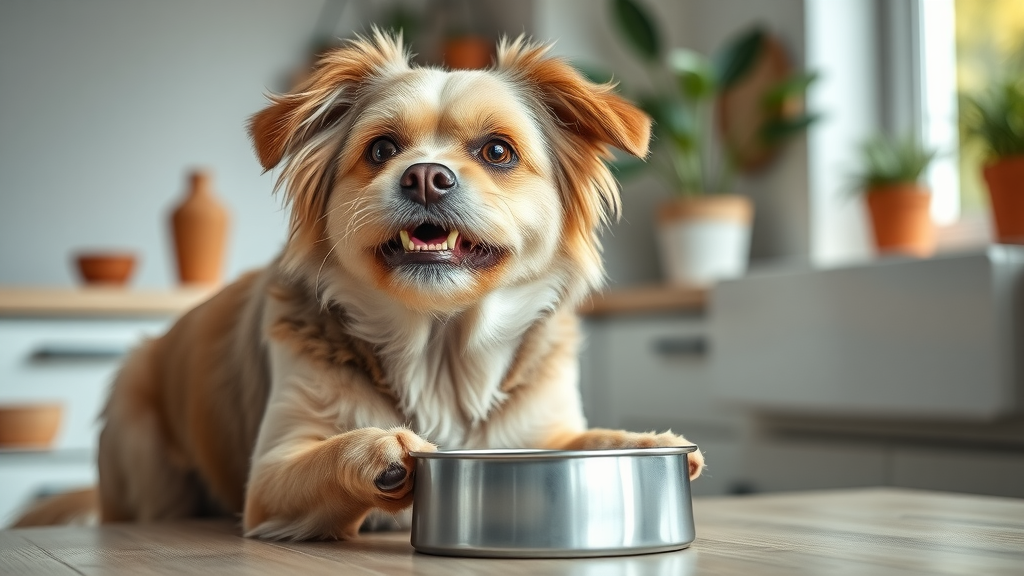
Potty Break Planning: Keeping Your Dog Comfortable and Happy
Regular potty breaks are a must—no matter your dog's age. Puppies have smaller bladders and higher urgency, needing to go outside every couple of hours, especially after meals and naps. Adult dogs generally require a break every four to six hours, depending on their size and activity. A well-planned potty break schedule prevents accidents and supports house training, especially for new dogs or rescues settling into your home.
Keep an eye on your dog’s cues—circling, whining, or waiting at the door are classic signs they need to go. By anticipating these needs, you reinforce their trust in you as a responsible pet owner, which strengthens your bond over time. Nighttime should also include a final break right before bed, ensuring your dog can settle in for good sleep.
Frequency and Duration of Potty Breaks in a Daily Routine for Your Dog
- Puppies may need potty breaks every 2–3 hours; adult dogs typically every 4–6 hours
- Monitor signs that your dog needs to relieve themselves, especially after meals and naps
A dependable potty routine not only keeps your house clean but also lowers your dog's anxiety about finding a suitable place to go. If your dog ever regresses, review your schedule for your dog and tighten up timing where needed. Consistency is the secret to stress-free outings—both for you and your furry friend.
Incorporating Walks and Exercise in the Daily Routine for Dogs
Physical activity is non-negotiable for your dog’s overall well-being. A routine that includes a regular dog walk and play sessions wards off obesity, supports joint health, and gives your dog an outlet for curiosity and energy. Puppies need short, closely supervised bursts of exercise, while adult dogs benefit from longer walks, runs, or games in the yard.
Remember that exercise isn’t just about physical health—it fuels mental stimulation too. On busy days, try splitting activities into shorter segments. If you work long hours, consider hiring a dog walker to ensure your dog never misses their favorite part of the daily routine. Weather got you stuck inside? Rotate indoor games or set up an obstacle course to keep things engaging.
Optimal Exercise Schedules for Adult Dogs and Puppies
- Plan short, engaging walks for young puppies; longer, more vigorous activities for adult dogs
- Include off-leash play for robust mental stimulation and quality time
Every dog is unique—find what physical activity makes your pet happiest and incorporate it into your schedule for your dog. Rotating exercise types and locations also prevents boredom, encourages good behavior, and builds long-lasting memories together.
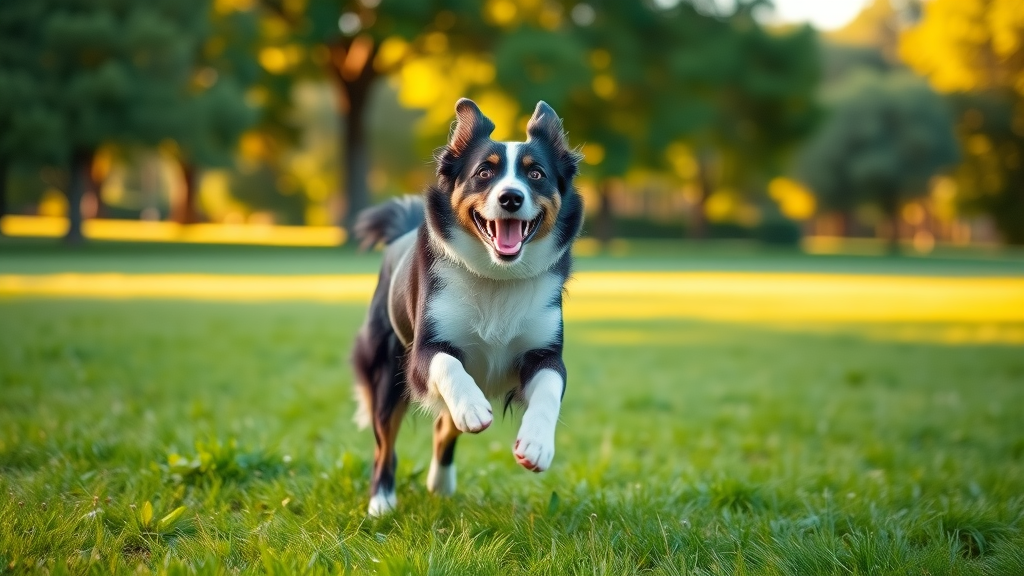
Mental Stimulation: Keeping Your Dog’s Mind Active With a Routine
A truly balanced daily routine goes beyond just walks and meals—dogs crave mental stimulation just as much. Engaging their brain with puzzles, training sessions, or games prevents destructive behaviors and promotes a confident, well-adjusted pet. This is especially true for working breeds or older dogs, who benefit from feeling useful and accomplished.
Even a few minutes of brain games each day can make a big difference for your furry friend. Introduce novelty to prevent boredom and set aside quality time for interactive activities, whether it’s scent work, hide and seek, or learning new tricks.
Brain Games and Activity Ideas for Daily Mental Stimulation
- Interactive toys
- Puzzle feeders
- Short, new training tasks
Rotate the toys and games you use daily so your pet always has something new to anticipate. Frequent training sessions aren’t just for puppies—adult dogs of all ages love learning, exploring, and solving challenges with you.

Quality Time: Building a Strong Bond with Your Dog’s Daily Routine
Your bond with your dog deepens during regular, uninterrupted quality time . Whether you’re playing tug-of-war, cuddling on the couch, or exploring a new park, these moments help your dog feel valued as a family member and reduce stress for both pet and owner. Aim to spend at least 15 minutes of focused time each day with your dog—this is especially important if you work outside the home or have a busy household.
Rotate the activities you share to increase excitement and enjoyment, from trying a new route on your daily walk to practicing tricks or enjoying calm downtime. Not only does this routine for your dog reinforce positive behaviors, but it also strengthens your dog’s emotional resilience, making them better able to handle new experiences or unexpected changes.
Effective Ways to Create Emotional Connection and Enrichment
- Daily play and cuddling sessions
- Rotate toys and activities to keep your routine with your dog fresh
Letting your dog know they are loved is the easiest and most enjoyable part of a daily schedule. Celebrate small milestones and find new ways to give your dog attention so they always associate their routine with happiness.
Adapting Your Dog’s Daily Routine for Life Changes
Sometimes life throws curveballs—a holiday trip, late meeting, or a change in work schedule. During these times, the structure and comfort of a daily routine matter even more for your pet’s well-being. Maintain your dog’s core anchor activities: breakfast, potty break, daily walk, and evening wind-down. Adjust other activities as needed, but try to make transitions gentle and predictable.
When introducing changes, give your dog time to adapt. Adult dogs, in particular, can become anxious with sudden shifts, so reinforce their sense of security with positive attention and consistent care.
How to Adjust for Holidays, Travel, or Changes in Schedule
- Maintain core anchor activities (feeding, potty break, walk) even during disruptions
- Introduce changes gradually to avoid anxiety in adult dogs
If you need support during a transition, consider enlisting a trusted dog walker or pet sitter who can help keep your schedule consistent. Small adjustments, made with patience and love, will keep your furry friend happy no matter what’s on your calendar.
People Also Ask: What is a normal daily routine for a dog?
A normal daily routine for a dog includes set meal times, morning and evening walks, consistent potty breaks, moments for play or training, and wind-down time before bed. This structure supports physical and emotional health.
People Also Ask: What is a perfect day for a dog?
A perfect day follows a balanced daily routine featuring exercise (walks and play), positive social interactions (with humans or other dogs), mentally stimulating activities, nutritious meals, and quality rest, tailored to your dog’s individual needs.
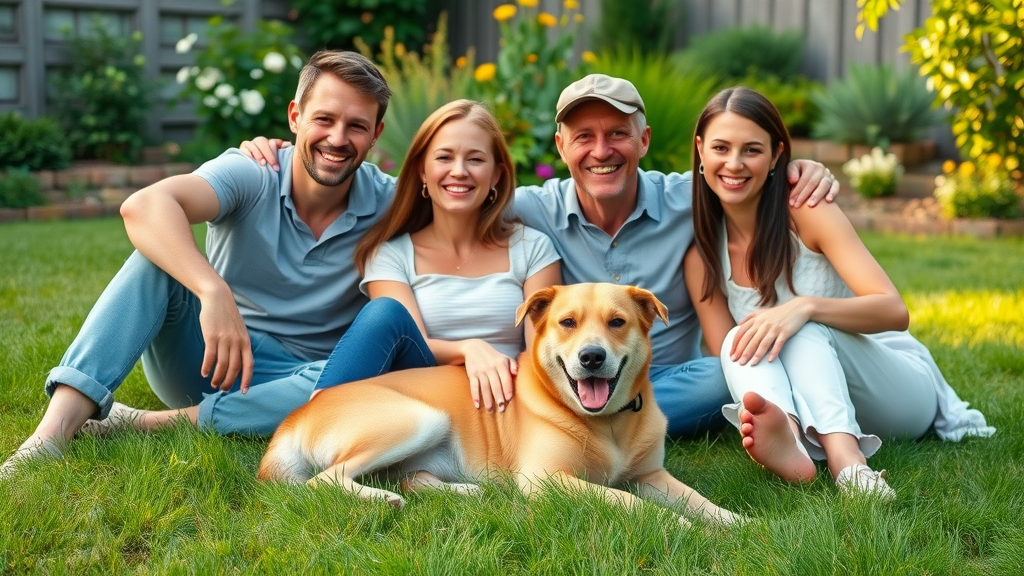
People Also Ask: What is a good dog sitting schedule?
A good dog sitting schedule closely mirrors the owner’s established daily routine for the dog, including feeding, potty breaks, walks, play, and downtime, minimizing stress during the owner’s absence.
People Also Ask: Are dogs happier with a routine?
Consistent routines provide predictability, reduce anxiety, and create a secure environment, making dogs demonstrably happier and more relaxed.
Troubleshooting: Signs Your Dog’s Daily Routine Needs Adjustment
Even the best routines occasionally need tweaking. Watch for behavioral shifts that may indicate your schedule for your dog isn’t meeting their needs. These might include restlessness or excessive sleeping, changes in appetite, sudden potty accidents, destructive chewing, or increased separation anxiety. Such changes could signal boredom, insufficient exercise, or a need for more mental stimulation.
When you notice these behavioral clues, reassess your routine. Perhaps your older dog needs a gentler pace, or your energetic puppy craves more playtime. Don’t hesitate to reach out to a veterinarian or dog behaviorist if problems persist—they can offer insights to fine-tune your daily schedule for lasting harmony.
Behavioral Clues to Watch For in Adult Dogs
- Restlessness or excessive sleeping
- Changes in appetite or sudden accidents
- Destructive behavior or separation anxiety
These signals are your cue to give your dog extra attention, adjust their physical activity, or add new challenges to daily play. Staying attuned keeps your routine for your dog responsive and supportive at every life stage.
Frequently Asked Questions About Dog Daily Routines
How often should I change my dog's daily routine?
You should only change your dog’s daily routine when necessary—such as switching to adult food, adjusting for a new family member (like a puppy or baby), or responding to health changes. Dogs love consistency; introduce new routines gradually and monitor your pet’s response for any signs of stress or confusion.
Can I skip a walk if the weather is bad?
Safety comes first—never risk your dog’s health in dangerous weather! But skipping their dog walk doesn’t mean slacking on exercise. Replace walks with indoor activities: a training session, fetch down a hallway, or food puzzles to burn off energy and keep your dog’s mental stimulation high when storms strike.
What’s the ideal mental stimulation for adult dogs each day?
Adult dogs should have at least 15–30 minutes of focused brain games, training, or interactive play. Mix up puzzle feeders, scent work, and teaching new tricks to maintain interest. Adjust the challenge and variety based on your dog’s personality for the best results.
Watch our expert break down how to build a healthy daily routine for your dog, including meal timing, exercise, training, and adaptation tips.
Learn how to tailor daily schedules for puppies versus adult dogs, understanding the developmental differences and expert insights for every life stage.
Key Takeaways for a Flourishing Daily Routine for Your Dog
- Establish a predictable daily routine for key activities
- Incorporate regular quality time and mental stimulation
- Adjust your dog’s daily routine as needs and circumstances change
Ready for More Wagging Tails and Expert Tips?
🐾 Love pets as much as we do? Get the best tips, treats, and tail-wagging stories delivered monthly.
👉 Subscribe to our newsletter and never miss a bark or purr!
Establishing a consistent daily routine is vital for your dog’s physical health, emotional well-being, and behavior. A structured schedule provides predictability, reducing stress and promoting a harmonious household.
Morning Routine:
-
Wake-Up and Potty Break: Begin the day with a bathroom break to prevent accidents and set a positive tone.
-
Breakfast: Serve meals at the same times each day to support digestion and regulate energy levels.
-
Exercise or Walk: Engage in a morning walk or play session to reduce hyperactivity and strengthen your bond.
Midday Routine:
-
Lunch (if applicable): Puppies or dogs on special diets may require a midday meal.
-
Potty Break: A midday bathroom break is essential, especially for dogs spending most of their day indoors.
-
Mental Stimulation: Incorporate training sessions, puzzle toys, or interactive play to keep your dog’s mind active.
Evening Routine:
-
Dinner: Maintain a consistent dinner time to regulate metabolism and prevent late-night hunger.
-
Evening Walk or Playtime: Provide additional exercise to release leftover energy and promote relaxation.
-
Wind Down: Engage in calm activities like gentle play or cuddling to signal the end of the day.
-
Bedtime: Establish a regular bedtime to ensure your dog gets adequate rest.
Consistency in feeding times, exercise, mental stimulation, and rest periods helps your dog feel secure and balanced. Adjust the routine as needed to accommodate your dog’s age, breed, and individual needs.
For a comprehensive guide on creating a balanced daily routine for your dog, including sleep, meals, and play, refer to the article “Creating a Balanced Daily Routine for Your Dog: Sleep, Meals, and Play” by Highlands-Eldorado Veterinary Hospital. ( hevh.net )
Additionally, the Atlanta Humane Society provides valuable insights on establishing a consistent dog routine to help your pet acclimate to their new home and set clear expectations. ( atlantahumane.org )
By following these guidelines and utilizing the resources provided, you can create a daily routine that promotes your dog’s health, happiness, and overall well-being.
 Add Row
Add Row  Add
Add 




Write A Comment